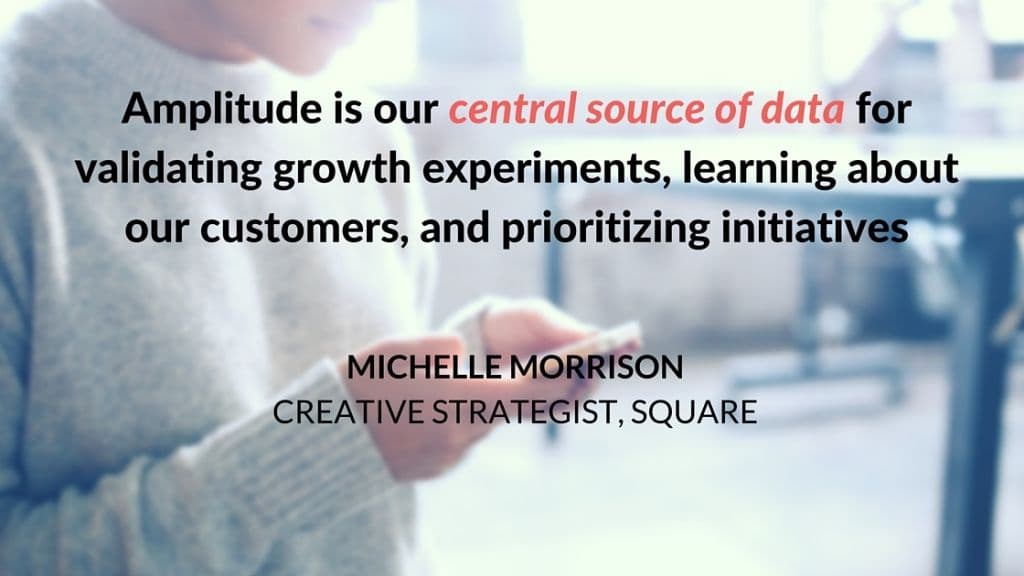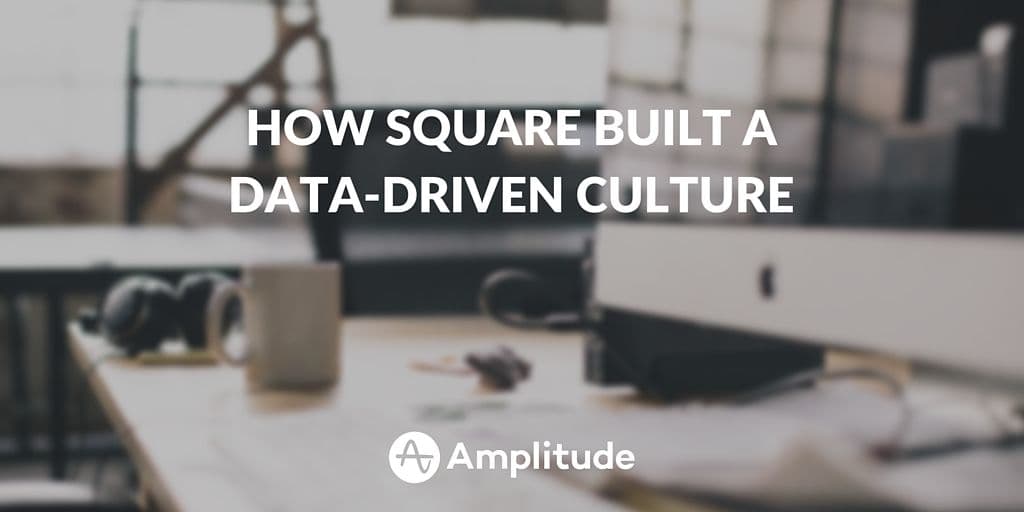How Square Built A Data-Driven Culture
Amplitude lets Square process their billions of events a month without one person “holding the keys” to all the company’s data.
Square’s products have transformed the way we think about commerce. The Square Reader turned internet-enabled iOS devices into points-of-sale, allowing entrepreneurs to accept credit cards anywhere. The iPad-enabled Square Stand gave businesses a more elegant and functional cash register. Today, Square has a whole suite of products and services, but all of them have the same core value. They make commerce easy. Square, of course, is no tiny startup anymore. They went public in 2015 and employ over 2,000 people. But the thing that’s set them apart from many other public companies is that their IPO did nothing to blunt their experimental spirit. They’re still in hyper-growth mode. They’re not hanging back and maintaining. They’re constantly experimenting, trying out new ideas, and working to improve their products with data.
Open Data Is The New Open Office
The foundation of Square’s experimentation is data. They track billions of events every month, which encompasses every interaction a user has with Square. That could mean:
- Opening an email from Customer Support, or
- Processing a new transaction, or
- Navigating a list of menu items, and so on.
That’s a massive catalog of events corresponding to a wide breadth of departments inside Square. By tracking them with user IDs and timestamps, Square could generate highly detailed views of user behavior that would be valuable to everyone on the team. But there was a problem. The internal analytics team at Square simply had no way of keeping up with the volume of data requests they were getting. With billions of events and over 2,000 employees, their backlog was piling up, snarling experimentation throughout the whole company. To make that data accessible to all—product teams, growth teams, marketing teams, customer support—Square needed a tool that could get the data, process it, and centralize it all in one place. **Amplitude lets Square process their billions of events a month without one person “holding the keys” to all the company’s data. Everyone can access the dashboard, and more than 100 Square employees do so every single day. ** Individual employees, no matter what team they’re on, can go to their Amplitude dashboard as a source of truth whenever data is needed to make a call. Product managers and dedicated analysts can understand what user behavior looks like at scale, using Amplitude tools that chart user flows and show you where customers are churning. “We heavily use Amplitude’s Pathfinder and user activity streams to get in the heads of our users and understand how they navigate through the product,” said Anne Yeung of the analytics team, “finding where they’re getting stuck or confused.” Amplitude makes data like that available to everyone. Of course, it’s not enough for the data to be available. There has to be a process in place for turning that data into action. [Tweet “#Data analysis should never be the responsibility of one siloed department. “]
Show Me The Data
Accessible data alone can’t create a data-driven team. You also need a rigorous and metric-based process for using that data. Michelle Morrison leads creative strategy and operations on Square’s Acquisition team. As such, she’s constantly fielding a large stream of ideas and requests. Growth experiments, website updates, specific departmental issues—to make efficient use of everyone’s time, Michelle and her team set up an experimental triage to prioritize their work. That means anyone who comes to Michelle with a project has to bring data. They have to be able to show, with reference to real metrics:
- The total opportunity if their experiment is a success
- The resources they need to try it
- The expected result
Michelle and her team weigh all three factors together for every project that comes down the pipeline, and they use that information to prioritize which they should do and which should come first. [Tweet “Accessible data alone can’t create a data-driven team. You need to use that data.”] To assess the information, they use the same tool that everyone else in the company uses to pitch their experiment ideas: Amplitude. “Amplitude is our central source of data for validating growth experiments, learning about our customers, and prioritizing initiatives,” Michelle says.****

Experimentation At Scale
The problem Square was having wasn’t unique. They just wanted two things:
- An open, data-driven culture where any employee could access the information necessary to make smart decisions
- A rigorous, equally data-driven process for assessing the viability of experiments and prioritizing their work
The problem is that these two things are usually hard to find together. Without a process, experimentation slows to a crawl because it becomes impossible to define a workflow or prioritize one experiment over another. If data isn’t accessible, the pipeline dries up because all requests have to flow through one analytics team. Square chose Amplitude because while they may be a public company, they’re still a lean, data-driven startup. Their whole ability to compete and win depends not just on their ability to synthesize insight from a massive amount of user data, but on their ability to spread that data around. Data analytics should never be the responsibility of just one siloed department. It should be a collectively shared truth accessible to every single person at a company. For Square, a 2,000+ strong organization with hyper-growth in mind, only Amplitude could make that a reality.

Alicia Shiu
Former Growth Product Manager, Amplitude
Alicia is a former Growth Product Manager at Amplitude, where she worked on projects and experiments spanning top of funnel, website optimization, and the new user experience. Prior to Amplitude, she worked on biomedical & neuroscience research (running very different experiments) at Stanford.
More from Alicia




